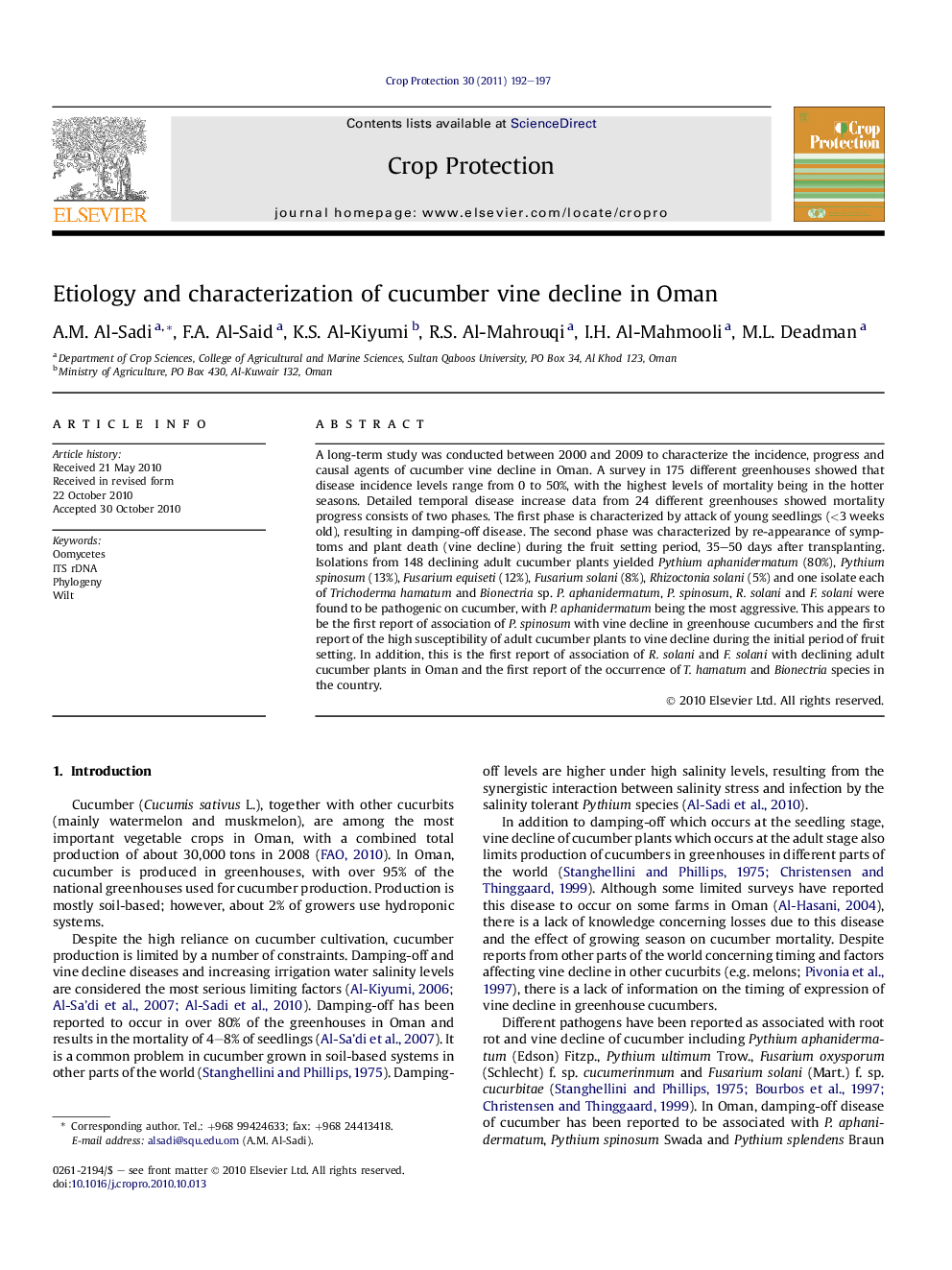| Article ID | Journal | Published Year | Pages | File Type |
|---|---|---|---|---|
| 4506655 | Crop Protection | 2011 | 6 Pages |
A long-term study was conducted between 2000 and 2009 to characterize the incidence, progress and causal agents of cucumber vine decline in Oman. A survey in 175 different greenhouses showed that disease incidence levels range from 0 to 50%, with the highest levels of mortality being in the hotter seasons. Detailed temporal disease increase data from 24 different greenhouses showed mortality progress consists of two phases. The first phase is characterized by attack of young seedlings (<3 weeks old), resulting in damping-off disease. The second phase was characterized by re-appearance of symptoms and plant death (vine decline) during the fruit setting period, 35–50 days after transplanting. Isolations from 148 declining adult cucumber plants yielded Pythium aphanidermatum (80%), Pythium spinosum (13%), Fusarium equiseti (12%), Fusarium solani (8%), Rhizoctonia solani (5%) and one isolate each of Trichoderma hamatum and Bionectria sp. P. aphanidermatum, P. spinosum, R. solani and F. solani were found to be pathogenic on cucumber, with P. aphanidermatum being the most aggressive. This appears to be the first report of association of P. spinosum with vine decline in greenhouse cucumbers and the first report of the high susceptibility of adult cucumber plants to vine decline during the initial period of fruit setting. In addition, this is the first report of association of R. solani and F. solani with declining adult cucumber plants in Oman and the first report of the occurrence of T. hamatum and Bionectria species in the country.
Research highlights►The highest mortalities in cucumber occur at the seedling stage and fruit setting. ►Damping-off and vine decline of cucumber can be caused by different pathogens. ►This appears to be the first report of Pythium spinosum causing cucumber vine decline.
